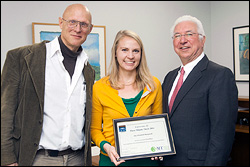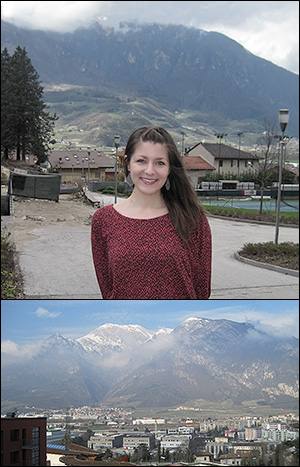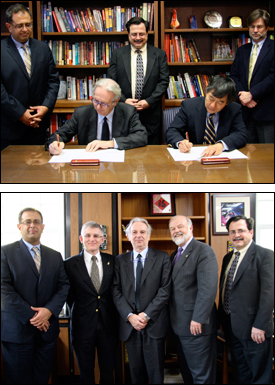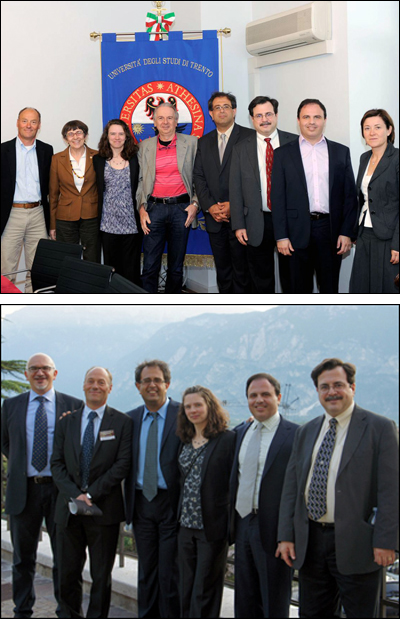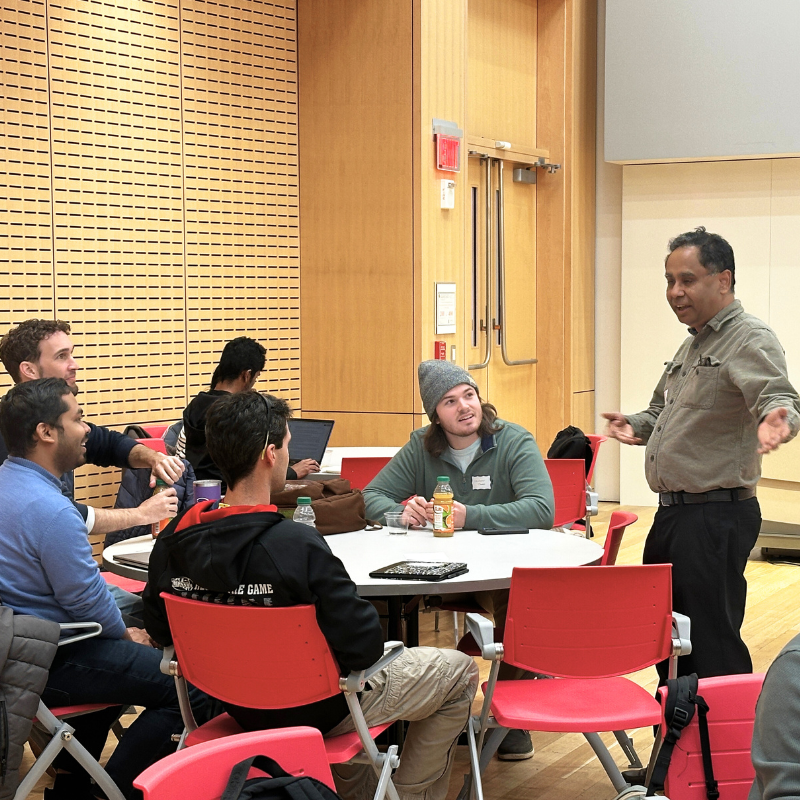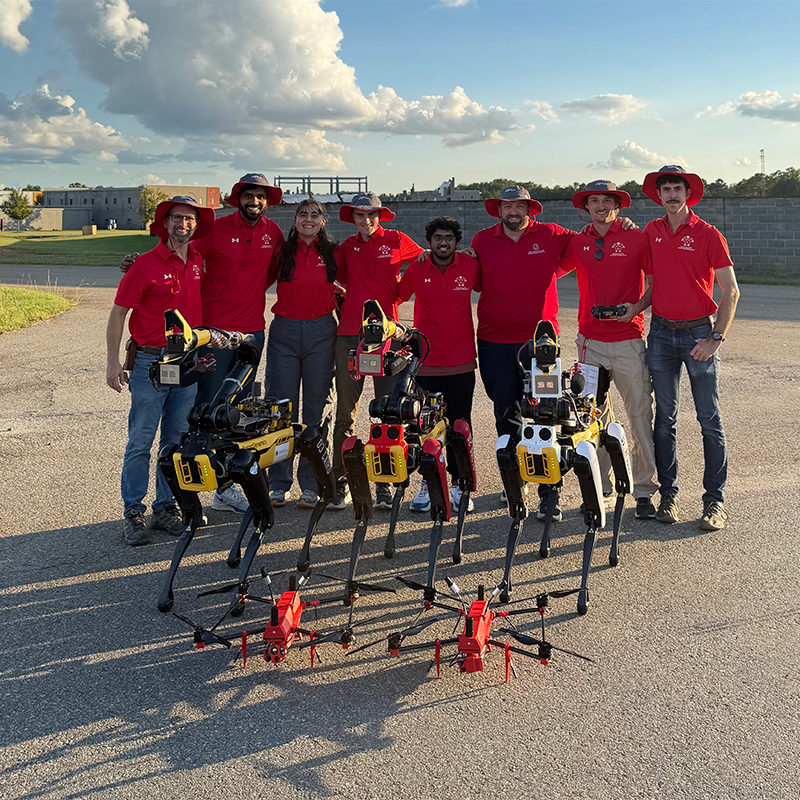News Story
International research partnership leads to major publication on controlling living cells with artificial cells
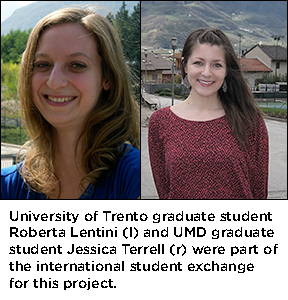
Collaborative research made possible by an international partnership agreement between the University of Maryland and the Autonomous Province of Trento, Italy, has resulted in publication in a major journal. The paper, "Integrating artificial with natural cells to translate chemical messages that direct E. coli behavior," appears in the May 30, 2014 edition of Nature Communications.
The research into controlling living cells through communication with artificial cells was conducted by the research groups of Professor Sheref Mansy at the Centre for Integrative Biology, University of Trento; and Robert E. Fischell Distinguished Professor William Bentley, chair of the Fischell Department of Bioengineering (BioE) at the University of Maryland.
A graduate student exchange program was an important part of the research. Maryland grad student Jessica Terrell (BioE) spent several months in Trento working in Mansy's research group, and Mansy sent his advisee, University of Trento graduate student Roberta Lentini, to work in Bentley’s Biomolecular and Metabolic Engineering Laboratories in College Park. Lentini developed an artificial cell that can respond to a quorum sensing signal [molecule], autoinducer-2, while Terrell built one that can synthesize and deliver autoinducer-2.
Lentini is first author on the resulting paper.
While previous efforts to control cellular behavior have largely relied on various forms of genetic engineering, modifying the genetic content of a living cell often changes the behavior of that cell. Recognizing this, the research group set out to construct a system whereby artificial, nonliving cellular mimics could be engineered to activate or prepress already-existing natural sensory pathways of living cells through chemical communication. To do this, the team of researchers worked to engineer Escherichia coli by targeting its sensory pathways. To avoid altering the genetic content of the bacterium, they constructed artificial cells that could interact with natural cells in order to evoke a behavioral response. As a result, the artificial cells release a molecule to which E. coli can naturally respond, thereby translating an unrecognized chemical message into a recognized chemical message, the group noted.
“This project is groundbreaking because it changes the way we can program living cells,” Bentley said. “Synthetic biology is largely stuck on the single viewpoint that in order to modify cellular behavior, the genetic content of the cell must be changed. Our new approach transiently and safely directs the function of natural cells using messages, in the form of signaling molecules, manufactured and sent by artificial ones.”
“Our work has shown that there is a completely different way to approach synthetic biology,” Mansy said. “It is not always necessary to genetically engineer living organisms to carry out desired activity. Instead, we can engineer nonliving, artificial cells to do many of the things that we are after. And, by doing so, we also bypass many of the problems that people have with living technologies.”
It is not always necessary to genetically engineer living organisms to carry out desired activity. Instead, we can engineer nonliving, artificial cells to do many of the things that we are after. And, by doing so, we also bypass many of the problems that people have with living technologies.
Sheref Mansy, University of Trento
To illustrate the significance of the group’s research, Mansy broke down what sets their system apart from those that rely on modifying the genetic content of a living cell.
“Imagine being offered two different therapies,” he said. “One is bacterium that has been engineered to clear your infection or whatever ailment you are suffering. The other therapy uses nonliving, artificial cells instead. Which would the average person want? Would they want to ingest something living that reproduces and evolves? Or would they prefer a nonliving mimic that simply does what’s needed for a couple of hours and that’s it?”
“An artificial cell is a powerful tool because it contains the machinery to transcribe and translate genes into proteins, all housed inside a protective lipid bilayer, just like a true cell, yet it is not alive,” Terrell said. And, since artificial cells are built bottom-up, they are relatively easy to design and control due to their simplicity and limited supply of components.”
Next steps include research of applications that could benefit from artificial cells, especially therapeutic or remediation strategies for maintaining and restoring natural stasis, Terrell noted.
“This work demonstrated that an artificial cell is capable of stimuli-triggered behavior, and can even interact with and influence changes in natural cells,” she said. “So, perhaps these types of entities could perform tasks in a targeted, on-demand and even interactive fashion in the body or in the environment. Some of their advantageous features include genetic programmability, protection of internal reagents from harsh conditions, adaptive response, and, finally, communication with surrounding cells or cellular organisms.”
The international partnership, administered by the Institute for Systems Research, funded projects in solar power and ultra-low power systems in addition to the cell-based systems research. In addition to Terrell and Lentini, five additional graduate students have participated in exchanges in the past year.
“The UMD-Trento partnership has been great,” Mansy said. “Both universities have excellent students and faculty, but different research cultures. I think this makes for a nice recipe for synergistic relationships that draw upon naturally existing complementary skills.”
Published June 26, 2014

